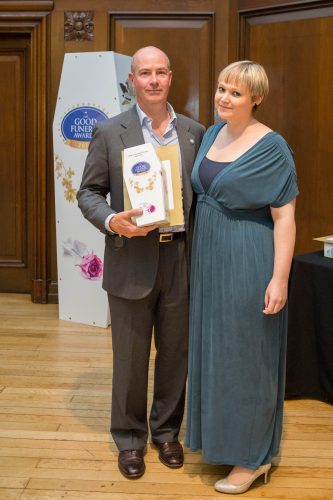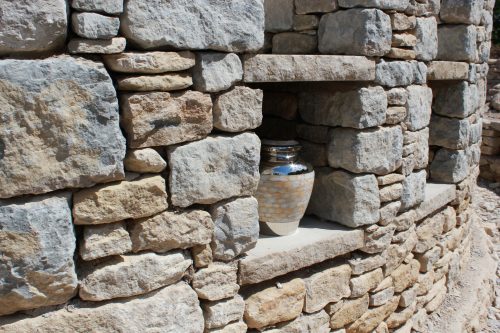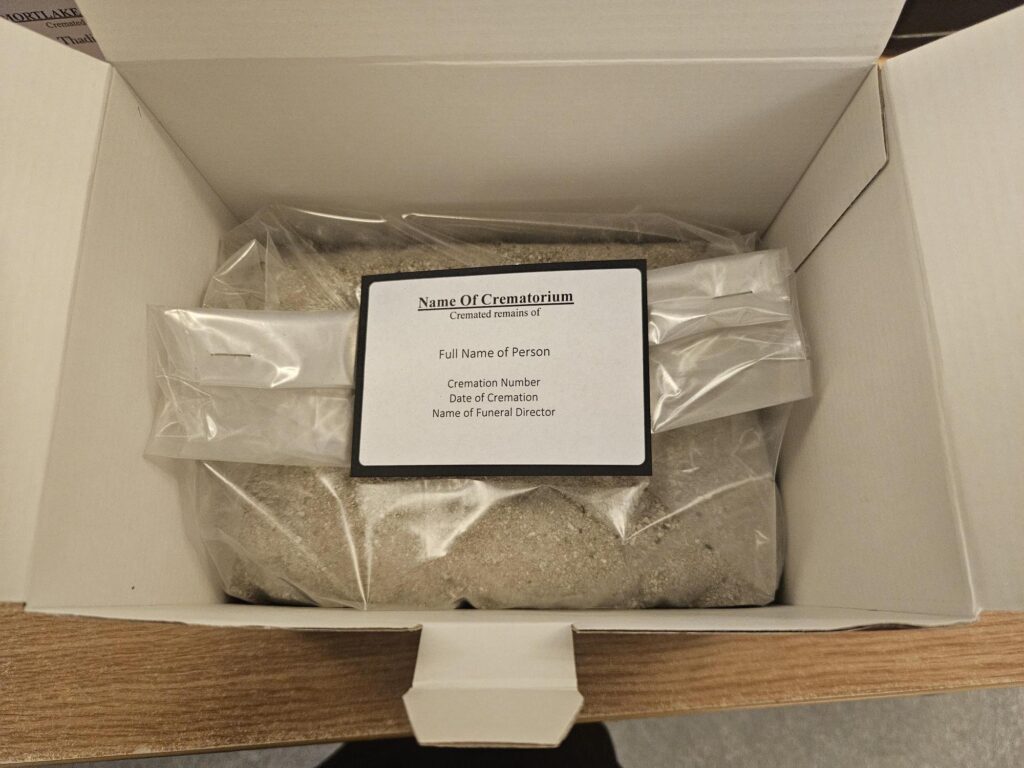
Recent disturbing incidents in the news continue to cause bereaved families across the UK worry and concern about whether they have been given the correct cremated remains of the person who has died.
We thought it would be helpful to have some clear information in the public domain about exactly what you should expect when you have arranged a cremation and asked for the cremated remains to be returned to you.
We are immensely grateful to Julie Dunk, CEO of the Institute of Cemetery and Crematorium Management (ICCM) for providing us with accurate and up to date information, and to Natasha Bradshaw, Superintendent at Mortlake Crematorium in London, for supplying us with the photos used to illustrate this piece.
Important points to note
Throughout the cremation process, correct identification is an essential element. Crematoria follow careful procedures to ensure that the identity of each coffin received for cremation is checked, and that all of the cremated remains from each individual cremation are kept separate, and collected and placed in one, clearly labelled container.
The commonly used word for cremated remains is ‘ashes’, which implies a soft, light substance such as when paper is burned or the remnants of a wood fire. This is very misleading when used to describe the substance that you will receive after a person has been cremated.
- Cremated remains are like a gritty sand, there may be tiny, fine, dust-like particles, but the bulk of the material will be more like gravel. The colour will range from off-white to dark grey.
- Cremated remains don’t smell and are safe to touch. If you want to transfer them from one container to another, be aware that there will be dust; you may want to wear a mask to avoid breathing this dust in.
- Cremated remains of an average adult will weigh around 2 – 4 kilos (4 – 8lbs). This is the equivalent of around 2 – 4 bags of sugar. People are often surprised by the weight.
- Cremated remains will be returned to you in a container. This may be a cardboard box, with the cremated remains in a plastic bag* within the box, or a plastic jar with a screw top, with the cremated remains either loose or in a bag inside. (*Some enlightened crematoria are now using paper bags rather than plastic.)
- There will also be a certificate issued by the crematorium called a Certificate of Cremation. This confirms that the cremation took place and may be needed if you are going to scatter or bury the cremated remains at a crematorium or in a cemetery or churchyard. If you are going to keep the cremated remains, or scatter or bury them somewhere private, you can either keep or dispose of the certificate.
- Whatever type of container is used by the crematorium or funeral director, it should have an identification label with the name and possibly other details such as a cremation number and a date of cremation. There should be a label on the outside of the container, as well as one on the bag inside, if this is used. Some crematoria place a pottery disc in with the cremation, which is then transferred to the cremated remains so they can be identified.
- If you have chosen your own container for your person’s cremated remains, then either the funeral director or the crematorium will ensure that they are transferred into it. All identification should be available for you to see (the labelled original container, and/ or the labelled internal bag) and the Certificate of Cremation will accompany your container.
- When you collect cremated remains from a crematorium, you will be asked to sign to show that you have collected them. It’s important to note that only certain people will be allowed to collect them; the person who applied for the cremation or somebody nominated by them, such as the funeral director. You may be asked to provide identification, such as a passport or driving licence to make sure that you are the right person.
- If a funeral director has collected cremated remains for you, you will need to make arrangements with the funeral director directly to have the cremated remains returned to you. All documentation and packaging should be as described above.
We hope that this information will provide reassurance to anyone who is worrying about the provenance of the cremated remains they have received.
Where there continues to be a concern – if, for example, the container or labelling used seems inadequate, or if no Certificate of Cremation was provided to you with the cremated remains – we suggest contacting the funeral director and crematorium concerned and asking them any questions you might have. Hopefully, they will be able to put your mind at rest; issues with the provenance of cremated remains are extremely rare.
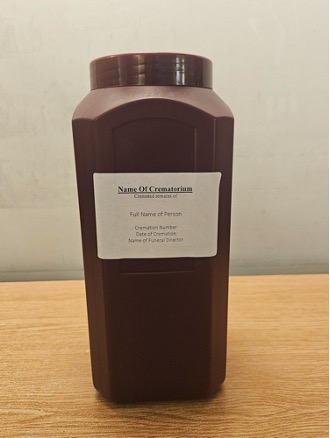
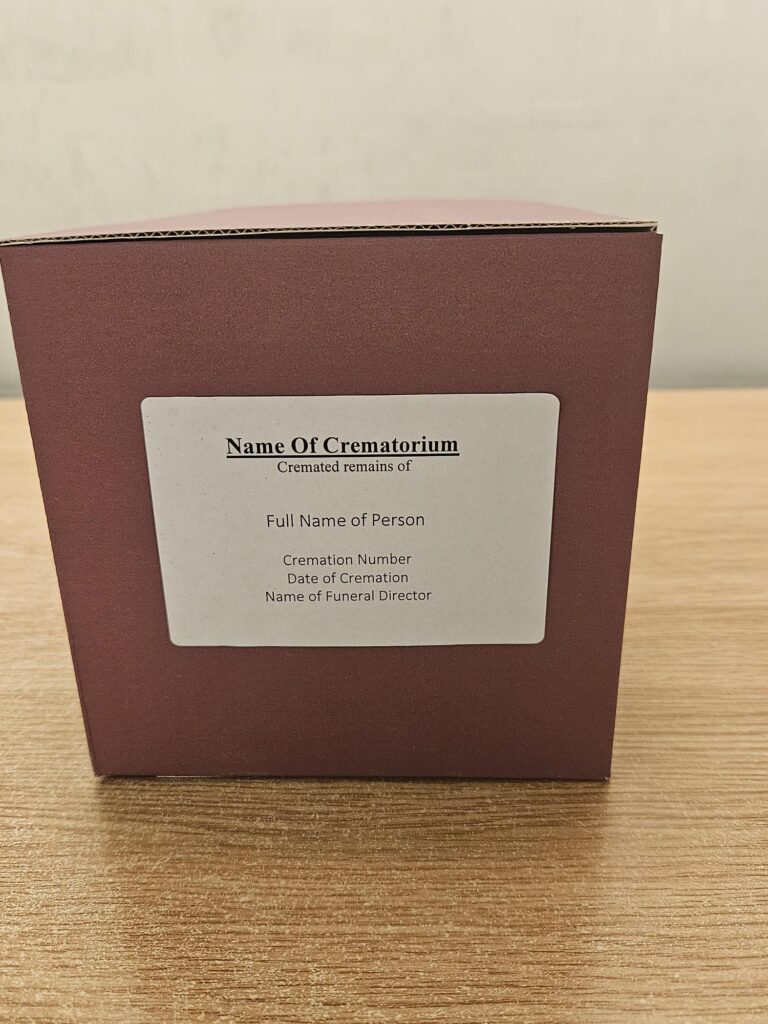
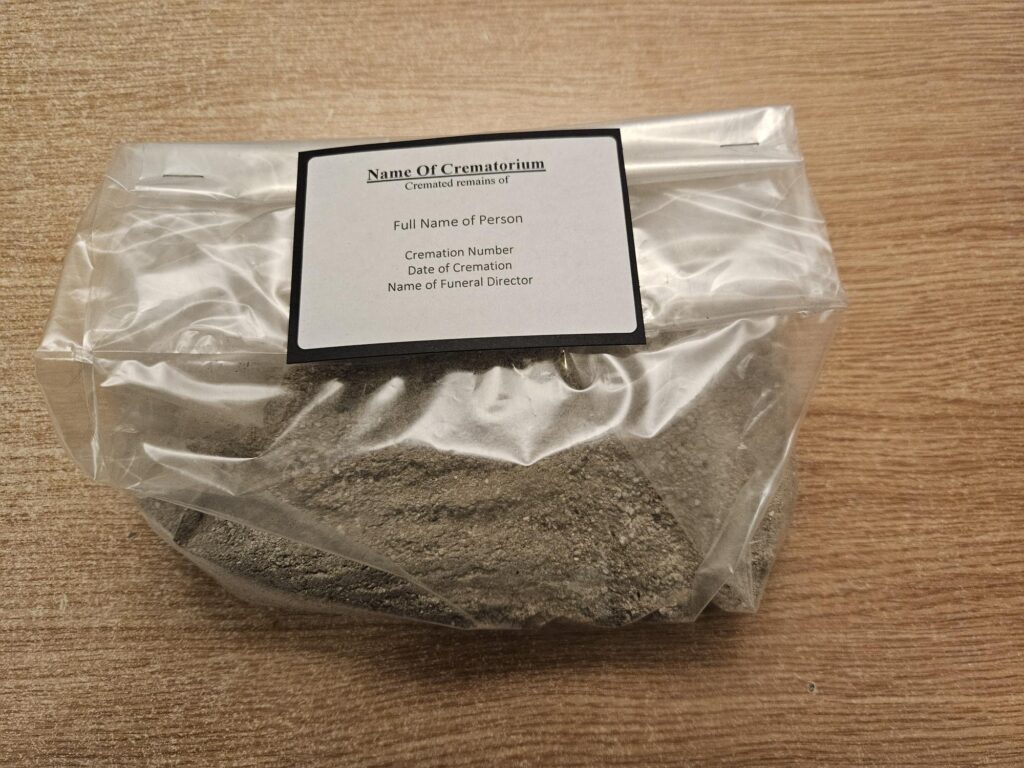
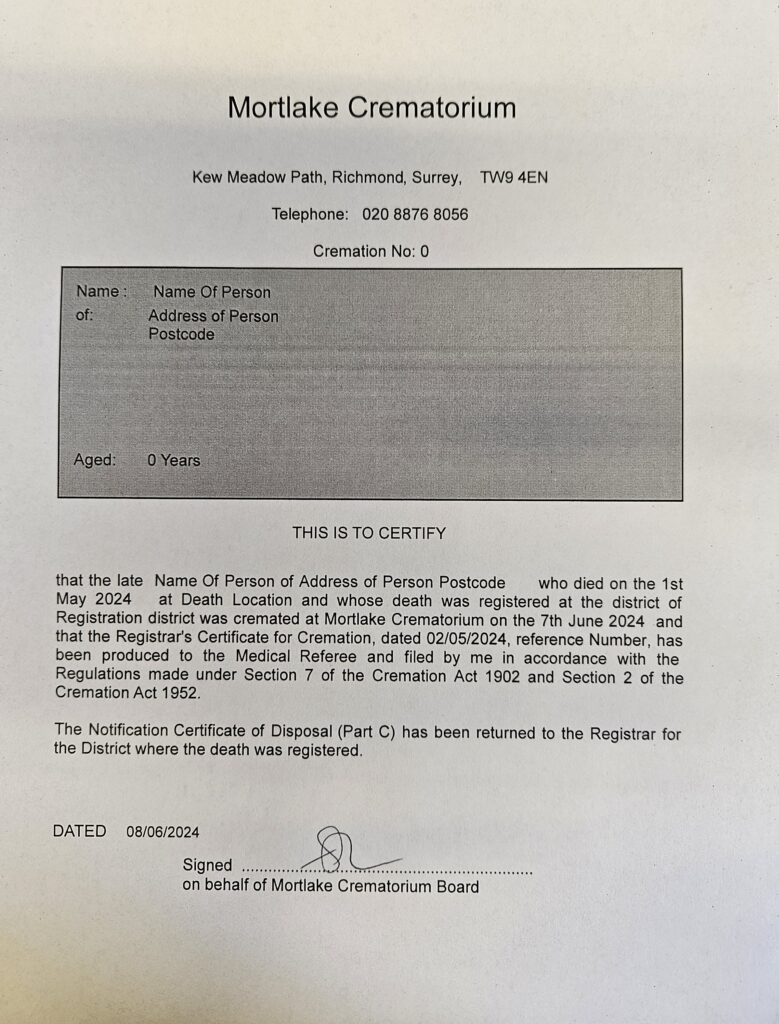
At the Good Funeral Guide, we do our best to help and advise anyone who has had a difficult experience with a funeral, although of course our powers are limited.
If you have ongoing concerns about cremated remains returned to you, do contact us by emailing Fran at fran.hall@goodfuneralguide.co.uk and we will see if we can assist you.

